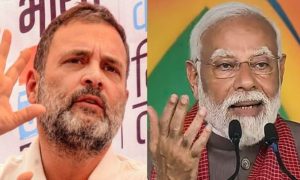Economic Survey 2022-23 says the Indian economy is well placed to grow faster in the coming decade once the global shocks of the pandemic and the spike in commodity prices in 2022 fade away; Check Highlights
Aday ahead of the Budget 2023, Finance Minister Nirmala Sitharaman on Tuesday presented the Economic Survey 2022-23 in Parliament. According to the Survey, India’s real GDP growth for the next financial year 2023-24 is pegged at 6-6.8 per cent. The country’s nominal economic growth is likely to grow at 11 per cent on a baseline scenario. Here’re the highlights of the Economic Survey 2022-23:
Read More: SBI launches affordable home loan campaign with discounts for high CIBIL score holders
India’s Economic Growth
According to the Economic Survey 2022-23, India’s real GDP growth is expected to grow at 6-6.8 per cent during the next financial year 2023-24. It added that on a baseline scenario, the country’s economy is likely to grow 6.5 per cent in 2023-24, compared with 7 per cent in the current financial year 2022-23, 8.7 per cent in 2021-22. “The Indian economy is well placed to grow faster in the coming decade.”
“The year FY23 so far for India has reinforced the country’s belief in its economic resilience. The economy has withstood the challenge of mitigating external imbalances caused by the Russian-Ukraine conflict without losing growth momentum in the process,” according to the Survey.
It added that India is the third-largest economy in the world in PPP (purchasing power parity) terms and the 5th largest in terms of exchange rates.
“The impact of the pandemic on India was seen in a significant GDP contraction in FY21. The following year, FY22, the Indian economy started to recover despite the Omicron wave of January 2022,” the Survey said.
Inflation Situation
According to the Survey, the rise in consumer prices has slowed considerably. The annual rate of inflation is below 6 per cent and wholesale prices are rising at a rate below 5 per cent.
In the current year, India has faced the challenge of reining in inflation that the European strife (Russia-Ukraine war) accentuated. Measures taken by the government and the RBI, along with the easing of global commodity prices, have finally managed to bring retail inflation below the RBI upper tolerance target in November 2022.
It said the RBI has projected headline inflation at 6.8 per cent in FY23, which is outside its target range. “At the same time, it is not high enough to deter private consumption and also not so low as to weaken the inducement to invest.”
The Economic Survey also said inflation should cool off this year. “Entrenched inflation may prolong the tightening cycle, and therefore, borrowing costs may stay higher for longer.”
Read More: How A Home Buyer Can Claim Income Tax Rebate For Under-Construction Flat
Other Domestic Macroeconomic Situations
Although the high oil price this year compared to last inflated India’s import bill and caused the merchandise trade deficit to balloon, concerns over the current account deficit and its financing have ebbed as the year rolled on. Foreign exchange reserve levels are comfortable and external debt is low, according to the Economic Survey 2022-23.
“…a downside risk to the current account balance stems from a swift recovery driven mainly by domestic demand, and to a lesser extent, by exports,” the Survey said, adding that “CAD needs to be closely monitored as the growth momentum of the current year spills over into the next”.
It also said the widening of CAD may also continue as global commodity prices remain elevated and the growth momentum of the Indian economy remains strong.
It said direct tax collections for the period April-November 2022 remain buoyant. Private consumption in the first half is highest since FY15 and this has led to a boost to production activity resulting in enhanced capacity utilisation across sectors.
India’s unemployment rate declined from 8.3 per cent in July-September 2019 to 7.2 per cent in July-September 2022. The credit growth to the MSME sector was over 30.6 per cent on average during January-November 2022.
It also said the Indian rupee performed well compared to other emerging market economies in April-December 2022.
“The Capital Expenditure (Capex) of the central government, which increased by 63.4 per cent in the first eight months of FY23, was another growth driver of the Indian economy in the current year, crowding in the private Capex since the January-March quarter of 2022,” the Survey added.
External Factors
The Economic Survey 2022-23 said global economic shocks in the past were severe but spaced out in time. This changed in the third decade of this millennium. At least three shocks have hit the global economy since 2020. It all started with the pandemic-induced contraction of the global output, followed by the Russian-Ukraine conflict leading to a worldwide surge in inflation.
“Then, the central banks across economies led by the Federal Reserve responded with synchronised policy rate hikes to curb inflation. The rate hike by the US Fed drove capital into the US markets causing the US Dollar to appreciate against most currencies. This led to the widening of the Current Account Deficits (CAD) and increased inflationary pressures in net importing economies,” it added.
On the outlook, it said global growth has been projected to decline in 2023 and is expected to remain generally subdued in the following years as well. The slowing demand will likely push down global commodity prices and improve India’s CAD in FY24. However, a downside risk to the current account balance stems from a swift recovery driven mainly by domestic demand.



































